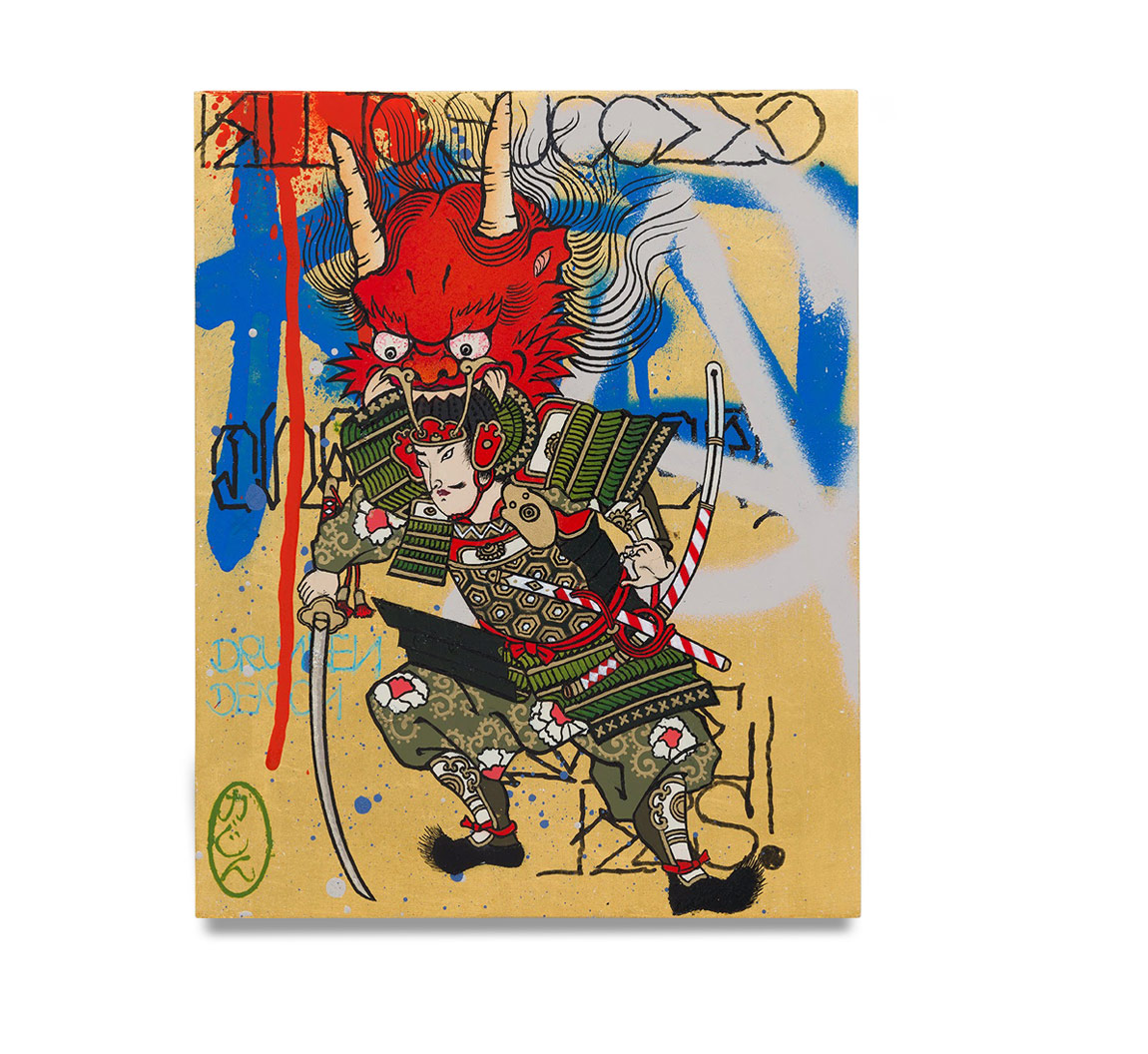

Title
Drunken Demon
Medium
spray paint, paint markers and 24k gold leaf on wood panel
Dimensions
10 x 8 in.
(25.4 x 20.3 cm)
Year
2014
Private collection
The 2014 painting Drunken Demon by Gajin Fujita is based on a wood block print by Nishimura Shigenaga (1697[?] - 1756). The original print dates back to c. 1720-1730, and depicts the story of Raiko and Shutendoji.
Shutendoji is characterized in Japanese folklore as a drunk demon boy who lived in a cave atop Mt. Oe.
The demon had an insatiable appetite for sake and would pillage nearby villages, wreaking havoc on its denizens. To ward off the demon from further attacks, the samurai Raiko traveled to the demon's lair and was successful in beheading the beast. Despite Raiko's valiant efforts, Shutendoji's decapitated head came to life, chasing Raiko out of the cave, and as a final act of vengeance, attempted to devour the samurai's head. However, Shutendoji's teeth were not powerful enough to penetrate the inner framework of Raiko's helmet, and eventually the demon head abated, leaving Raiko triumphant.
The characters in the original print were illustrated with little color in fact, Fujita believes it was printed in only red and black inks. In his painting, Fujita took creative liberties to ascribe color and patterning to the figures, and to the samurai's clothing in particular. The patterning on the the samurai's breastplate alludes to a turtle's protective shell, while the floral print evident in the trousers was taken from a traditional Japanese textile depicting peony flowers (Fujita claims this pattern is the Japanese equivalent to paisley).
As in most of Fujita's paintings, this one includes tags by one of his K2S crew members. Prime scrawled "KILL TO SUCCEED" across the top of the panel. The rest of the text was done by Fujita.
This is one of the earliest prints that Fujita has referenced; he was instantly drawn to both its comical narrative and unrefined quality.
According to Fujita, this print was made at the turn of the 18th century, during a time when Japanese printmakers began to experiment with technique. Moving away from single color process, they began to introduce more color into their images. Prints also reflected an evolving complexity in the depiction of figuration, and their ability to evoke narratives.
